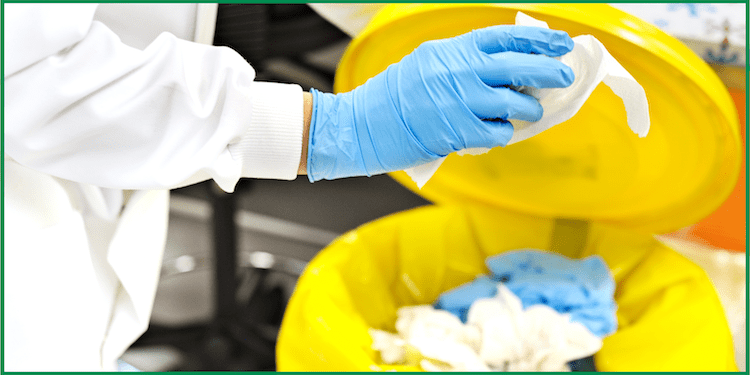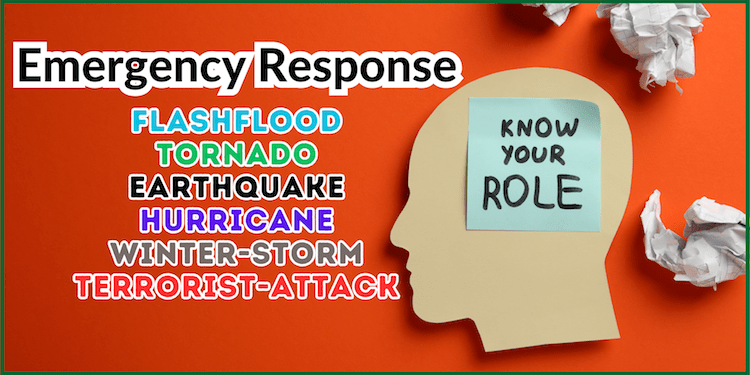The improper disposal of our everyday used hazardous materials and waste products can cause health, safety, and environmental problems.
Humans must recognize dangerous substances used daily, and know how to safely handle, use and dispose of them for the well-being of all and the environment.
TABLE OF CONTENTS
- What is Hazardous Material?
- Types of Everyday Hazardous Waste
- How to Dispose of Everyday Hazardous Waste
- Hazardous Material Safety Tips
WHAT IS HAZARDOUS MATERIAL?
A material is categorized as hazardous if it can harm human health and the living environment.
OSHA Occupational Safety and Health Administration, OSHA states a hazardous substance is any substance that is a physical or health hazard.
An example of an everyday hazardous material is present in every household, regardless of the status quo—rich or poor. Examples include kitchen and bathroom cleaners.
Everyday household cleaning products at our homes are safe if used appropriately.
However, household cleaning materials can become hazardous if used, stored, or disposed of against the label’s instructions, i.e., safety data sheet.
TYPES OF EVERYDAY HAZARDOUS WASTE
While there are nine classifications of hazardous materials, here are the standard and day-to-day hazardous materials humans encounter in everyday activities:
- Oxidizers/Organic Peroxides Substances: These materials can instantly react with other substances, causing heat and explosions. Oxidizer on itself is noncombustible; however, it can contribute as oxygen to a burning element. Examples include Washing Detergent and Hydrogen Peroxides.
- Corrosive Substances: These materials are highly reactive substances that cause apparent damage to living tissue. Corrosives damage other substances with which they come in contact through a chemical reaction. Examples of corrosive materials are Automobile Battery and Bathroom/Toilet Cleaner.
- Toxic and Infectious Substances: These materials can cause illness, serious injury, or death to humans if inhaled, swallowed, or by skin contact. Examples include Pesticides and Paints.
- Flammable (Solids and Liquids) Substances: These materials are volatile—evaporate quickly, ignite, and continue to burn in the air if exposed to an ignition source. Examples include Cooking Oil, Lighter/Matches, and Nail Polish.
Other everyday hazardous materials, such as cardboard, disinfectants, papers, and electronic materials, should be watched closely.
Ensure to read and follow product labeling instructions carefully, i.e., safety data sheet.
Hence, you are aware of any dangers—knowing how to dispose of them properly is imperative.
HOW TO DISPOSE OF EVERYDAY HAZARDOUS WASTE
Improper disposal of our everyday use of hazardous materials and waste products can cause health, safety, and environmental problems.
Adopting and following these recommendable disposal ways of hazardous materials and waste products will provide a safe environment for all.
- Label Instructions or Safety Data Sheet
There are no better ways to dispose of a product or material than referring to the manufacturer’s recommendable ways that come in a sheet form with the material or product.
The product manufacturer knows the preferable ways to dispose of his/her/they products. Ensure to read and follow product labeling instructions carefully, i.e., safety data sheet.
- Reduce and Recycle
Reducing hazmat usage will reduce hazardous materials present in landfills. The more hazardous substance we use, the more waste we will produce.
The United States Environmental and Protection Agency EPA recommends and encourages everyone to take all unwanted dangerous materials to the recycling agency—used or unused.
Recycling what we can’t reuse to generate new items keeps our environment clean of waste and toxic substances.
To find your local recycling agency, you can utilize the Earth911 website to locate collection agencies with available dates.
Or better yet, research and call the Environmental Protection Agency EPA on their hotline for proper hazardous material disposal at your location.
HAZARDOUS MATERIAL SAFETY TIPS
Follow these safety measures to protect yourself when handling, using, and disposing of hazardous materials.
- Read Labels / SDS: Read the instruction labels and safety data sheet carefully before handling and using toxic materials.
- Utilize PPE: Whenever you are handling and using dangerous substances, it is always a good idea to wear your protective equipment such as gloves, mask, goggles, etc.,
- Clean After Use: Always wash your hands properly after using any unsafe material; if bathing is required, do it.
- Don’t Mix Materials: Only mix compatible toxic substances, and only perform the mix if trained. Heat and explosions may occur in the mixture of some substances.
- Dispose of Material: Proper handling and disposal of hazardous materials are in the best interest of all, especially the handler.
Bottomline
Humans must recognize dangerous substances used daily and know how to safely handle, use and dispose of them for the well-being of all and the environment.
The improper disposal of our everyday use of hazardous materials and waste products can cause health, safety, and environmental problems.
Do you enjoy this reading? Kindly share with family, friends, and colleagues. Thanks 🙂



